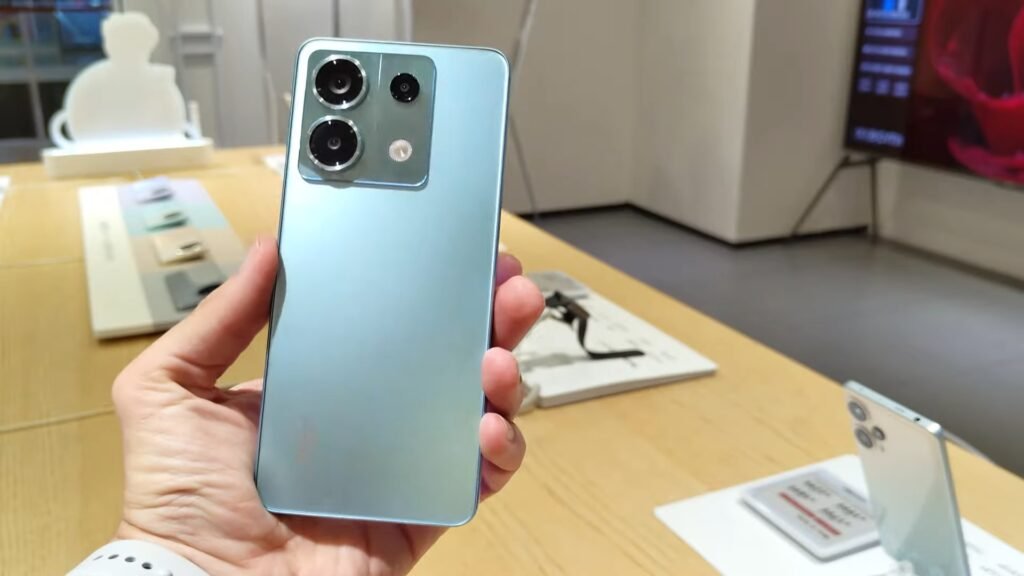Recently, Xiaomi held a presentation where they introduced the new Redmi Note 13 series, including three versions: the 13, 13 Pro, and 13 Pro Plus. I visited the Xiaomi flagship store to get a firsthand look at these new products, and today we’ll focus on the Redmi Note 13 Pro version. I purchased one for myself, and a full review of this model will be coming to our website later, so don’t forget to visit us.
Let’s start with the most interesting part: the pricing and configurations. The Redmi Note 13 Pro is available in the following colors: turquoise, black, purple, and white. As for memory configurations, you have five options to choose from:
- 8GB RAM + 128GB storage for $191.
- 8GB RAM + 256GB storage for $205.
- 12GB RAM + 256GB storage for $232.
- 12GB RAM + 512GB storage for $260.
- The highest configuration with 16GB RAM + 512GB storage costs $275.
Unlike the curved design of the Pro Plus version, the Redmi Note 13 Pro features a flat glass back panel that reflects light beautifully and has a premium feel. The dimensions of the smartphone are 161mm in length, 74mm in width, and 8mm in thickness, with a weight of 187 grams. It feels slightly large in hand but reasonably comfortable to hold. The surface is smooth but not slippery, and the square camera module is prominent, housing three camera levels. The main camera module is made of sturdy plastic and protrudes the least, followed by the macro module, while the wide-angle lens protrudes the most. A case is recommended, especially since the camera bump has sharp edges.
As for the frame, it is also flat and made of composite material, with a plastic surface and a metal structure inside. It feels like metal when tapped, and there is a slight haptic feedback. The buttons are on one side, and at the top, there’s an added bonus of a headphone jack. Next to it is a cutout for stereo speakers and an infrared port. At the bottom, you’ll find the Type-C port and slots for two nano SIM cards. The smartphone is rated IP54 for protection.
Xiaomi has equipped the Redmi Note 13 Pro with a 6.67-inch LED display with a resolution of 2712 x 1220 pixels. The display has narrow bezels, especially for a mid-budget device, with the bottom bezel being slightly wider at approximately 2.27mm. The display offers a high refresh rate of 120Hz with a touch sampling rate of 1920Hz, resulting in smooth and responsive touch interactions. The color accuracy is excellent at 12 bits, and it boasts high brightness, reaching up to 1200 nits in standard use and 1800 nits under direct sunlight. The low flicker percentage and high brightness make it comfortable for extended use.
Under the hood, the Redmi Note 13 Pro is powered by the Qualcomm Snapdragon 7S Gen2 chipset, built on a 4nm process. It features eight cores, with four high-performance cores clocked at 2.4GHz and four power-efficient cores clocked at 1.95GHz. The graphics are handled by the Adreno 710 GPU. The phone comes with fast LPDDR5 RAM and UFS 3.1 storage. I couldn’t run a graphics test due to the demo firmware on my unit, so the results were inaccurate. However, in terms of cooling, details were not available, but it’s likely to be similar to the Pro Plus version, which includes a liquid cooling element.
The Redmi Note 13 Pro is equipped with a 5100mAh battery that supports 67W fast charging, allowing the phone to fully charge in just 44 minutes. Xiaomi claims it can withstand up to 1,000 charge cycles with minimal capacity loss.
Moving on to the cameras, the Redmi Note 13 Pro features a main 200MP Samsung HP3 sensor with a 23mm focal length and f/1.65 aperture. It offers a two-times digital zoom and benefits from both optical and electronic stabilization. The video recording capabilities include 4K at 30 FPS. There’s also an 8MP wide-angle lens and a 2MP macro lens. The front camera is 16MP and can record videos at 60 FPS in Full HD.
Now, let’s talk about some drawbacks. The global version lacks multilingual support, and it doesn’t support the 7th and 20th cellular bands. On the positive side, it features basic stereo speakers, NFC, Bluetooth 5.2, and 5G Wi-Fi support.
In summary, the Redmi Note 13 Pro looks quite attractive in terms of specifications and price. Personally, I found the display and flat design impressive, so I opted for the Pro version. It remains to be seen how the chipset and camera perform in real-world usage. What are your thoughts on this smartphone, and do you see any potential competitors? Please share your thoughts in the comments. Thanks for reading, and see you next time!


